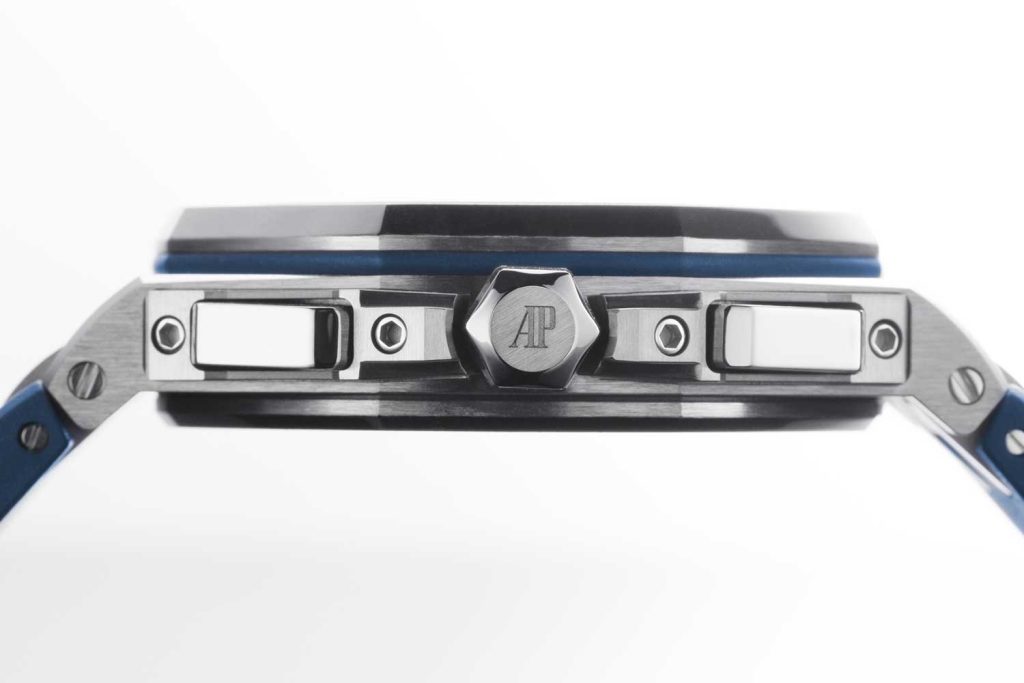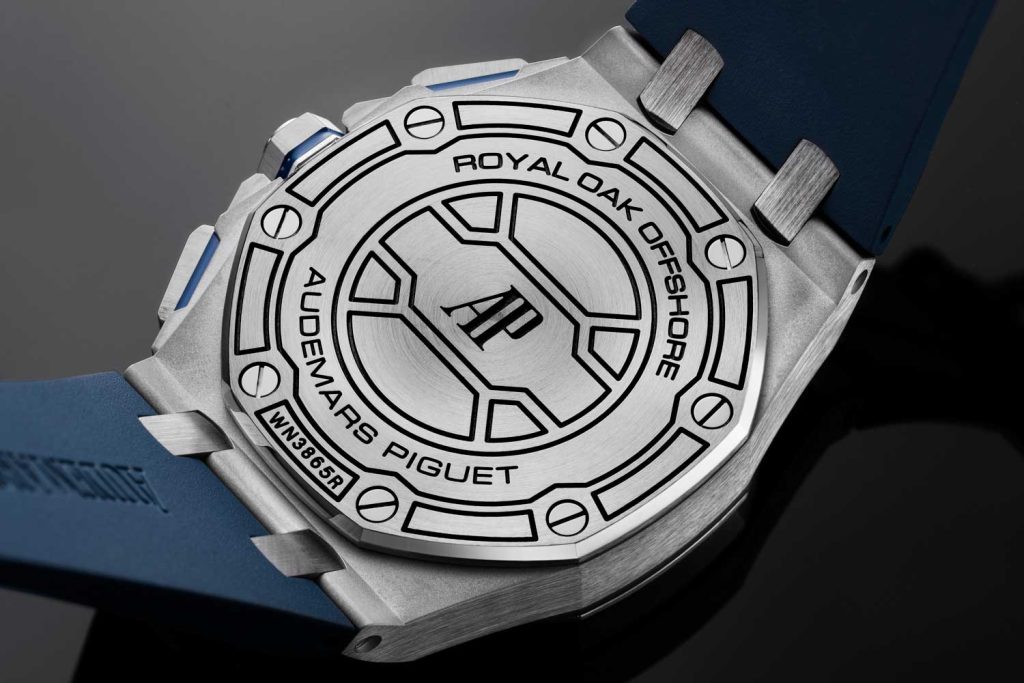Audemars Piguet
The Skinnier Royal Oak Offshore Chronograph
Audemars Piguet
The Skinnier Royal Oak Offshore Chronograph
The 3126 is of a modular construction that marries AP’s in-house 3120 with a Dubois-Depraz chronograph unit. The movement has been used to power the Royal Oak Offshore Chronograph since 2007, prior to which it was the 2126 that gave life to the Offshore since it was first introduced in 1993. The 2126 comprised of a Jaeger-LeCoultre base, the JLC 889 paired with a Dubois-Depraz chronograph module.

Audemars Piguet Royal Oak Offshore Chronograph (Image © Revolution)
The way this was possible was by AP powering this new Offshore Chronograph with the caliber 2385, which until now was only used for the Royal Oak chronographs and the 37mm Offshore chronographs. Whereas the 3126 uses a modular cam chronograph mechanism, the 2385 boasts an integrated chronograph mechanism with column wheel. Which in turn makes for a skinnier movement. The 3126 measures in at 7.16mm thick and 29.92mm in diameter. The 2385 on the other hand, measures in at 5.50mm thick and 26.20mm in diameter.

Audemars Piguet Royal Oak Offshore Chronograph (Image © Revolution)

Audemars Piguet Royal Oak Offshore Chronograph (Image © Revolution)
When AP resorted to use the more compact movement for the Offshore case, they were able to shave millimeters off the case to give the 2019 Offshore Chronograph a thinner case. However, keeping to the 42mm case width, the presence that the Offshore is known for, is still very much maintained.
Other points of deviation with the watch include the dial, which while retaining the Méga Tapisserie guilloche, now has white gold applied hour-markers with hour and minute hands in a matching style. The dial has also taken on a more classic tri-compax orientation, with the date window nestled in between 4 and 5 o’clock.
As refreshing as it is to see the Offshore Chronograph take on a new face and slimmer dimension, it has yet to be seen whether AP decides that this will ultimately take over as the face of the Offshore Chronograph and therein give all of its chronograph-only timepieces the integrated caliber bump.

Audemars Piguet Royal Oak Offshore Chronograph (Image © Revolution)
Movement
Self-winding Calibre 2385; hour and minutes; small seconds; chronograph with hour and minute totalizer; date; 40-hour power reserve
Case
42mm titanium; water resistant to 100m
Strap
Blue rubber strap with titanium pin buckle; comes with additional white rubber strap
[/td_block_text_with_title]

Audemars Piguet Royal Oak Offshore Chronograph (Image © Revolution)










